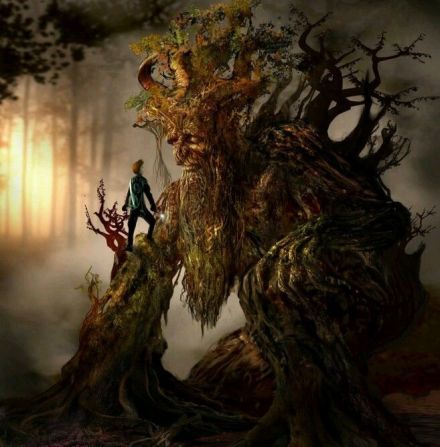Treant
Highly intelligent plant forms with anthropomorphic features. A treant is virtually indistinguishable from a gnarled tree when standing still, but it is in fact capable of movement and can pose a serious threat to any who would harm its forest. Treants are found in forested regions throughout the globe, and may form "stands" together in some areas. Their appearance, in terms of wood and foliage, matches that of the surrounding woodland closely.
As their forms match the trees nearby, treants exhibit nearly as much variety as trees themselves do. Oak, ash and elm treants may inhabit Western Europe, while baobab or acacia treants may be found in Africa, and so on. Nonetheless, all treants manifest many of the same general features. They are susceptible to fire, like trees, and save at a -4 against such attacks. Attacks based on fire are also at a +4 to hit and +1 to damage per hit die. The treant's regular armour class (AC) is 0, owing to their superior toughened bark.
All treants can also bring nearby trees to life as "half" treants (it is unknown if this is how treants eventually evolve to full sentience). Treants created in such a manner must be within 30 feet (6 hexes) of the original treant. The original treant can control no more than two such trees at a time. Awakened trees fight at half the power of the controlling treant.
As treants age, they gain additional hit dice and become more powerful. This process coincides with the growth of surrounding trees, and is influenced by competition for resources. Treants growing together will become less solitary, although it is common for treants to migrate elsewhere, to stand with younger stands of trees.
See Bestiary
